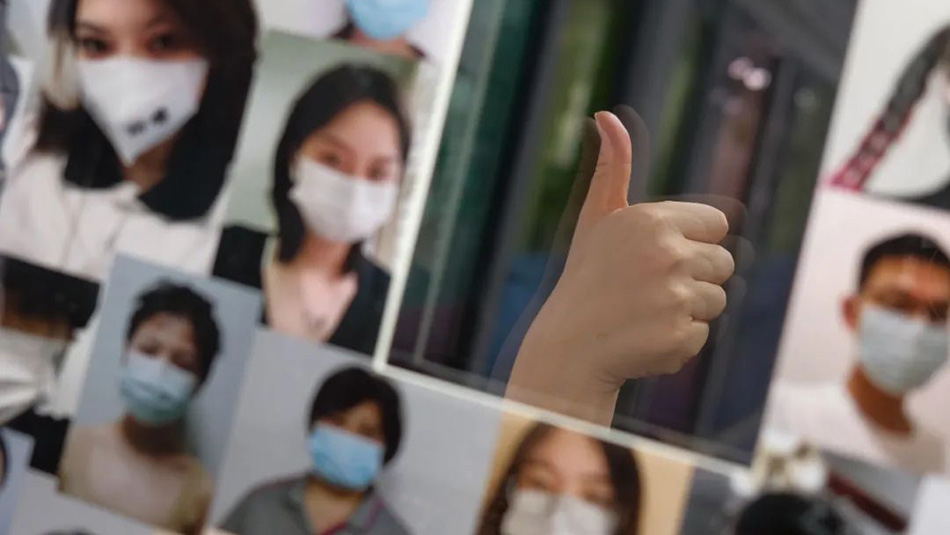Social activists in China are launching online platforms and offline activities for people with bipolar disorder to share experiences and make their voices heard to the public. Can these initiatives help them recover and change social attitudes towards them?
In the center of an art exhibition, an elegantly dressed woman who called herself Cracks was speaking nervously yet emotionally in front of the crowd. The words resonated firmly throughout the room, “I show these paintings to open my inner world and those of people with bipolar disorder. I want to tell my fellows you are not alone!”
Cracks, a 25-year-old designer, was sharing the basic knowledge of the bipolar disorder and how painting helped her gradually recover from her 11-year bipolar experience. The 14 paintings she created depicted her bipolar experience in an artistic and meaningful way and were displayed at the exhibition, attracting a large audience.
As her speech ended, the scene was overwhelmed by rapturous applause. She felt great accomplishment inside.

“I used to think I am a person of nothing. But this time I tried several firsts. The exhibition experience was the first time I showed my paintings in public, the first time I spoke in public about my bipolar story and the first time I speak out for bipolar patients,” says Cracks. “And I make it! I can also be a useful person!” Recalling that experience, she believes that was a huge step for her on the road to fighting bipolar disorder and gaining confidence.
In China, a growing number of offline art events have been launched in recent years, enabling mental patients to share their experiences in public through their artworks. This art exhibition named “Blue Dream – Bipolar Disorder Art Exhibition” is the second gallery show at Shanghai Mental Health Center. It features paintings created by people with bipolar disorder that showcase the inner world of them and depict their struggle with the illness.
Since the exhibition opened in November 2021, it has attracted thousands of visitors and gained widespread social attention. Many citizens have learned about some relatively unknown mental diseases like bipolar disorder through patients’ paintings and introductions on the display board. “Each piece is a self-portrait in a sense,” says Chen Mengyuan from the exhibition’s planning team. “Behind the symbolic language and the power of metaphor is expressed a dialogue between these patients as artists and their spiritual world.”
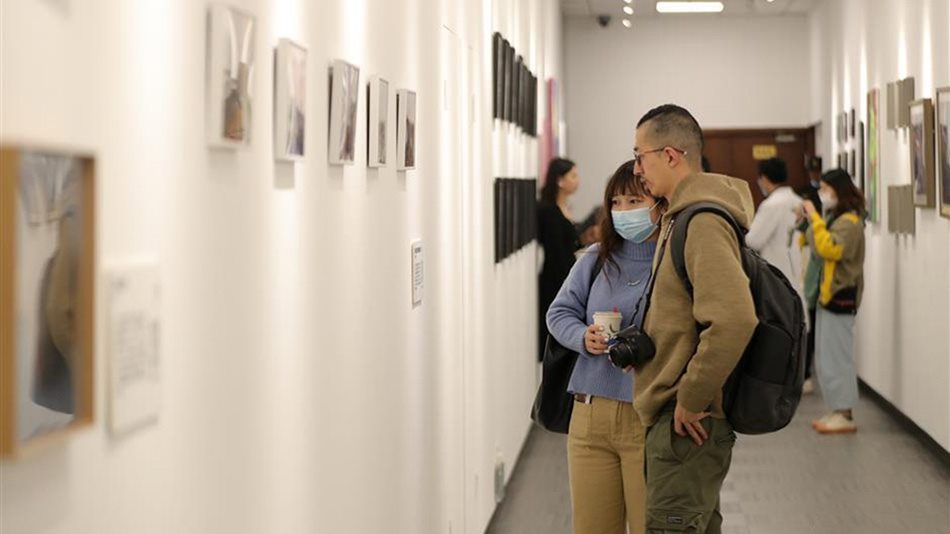
In this way, many people with bipolar disorder opened their inner world and made more comnnections with citizens, thus finding a new way to recover besides hospital treatment, according to Chen.
Illustrator Yilan, a girl with bipolar disorder and an artist at the exhibition, introduced herself in the text and video of her painting: “Dreams and emotions are often involved in my works. I hope my friends who have similar experiences can empathize with me through my paintings and understand this disease so that the affected group can get more social care.”
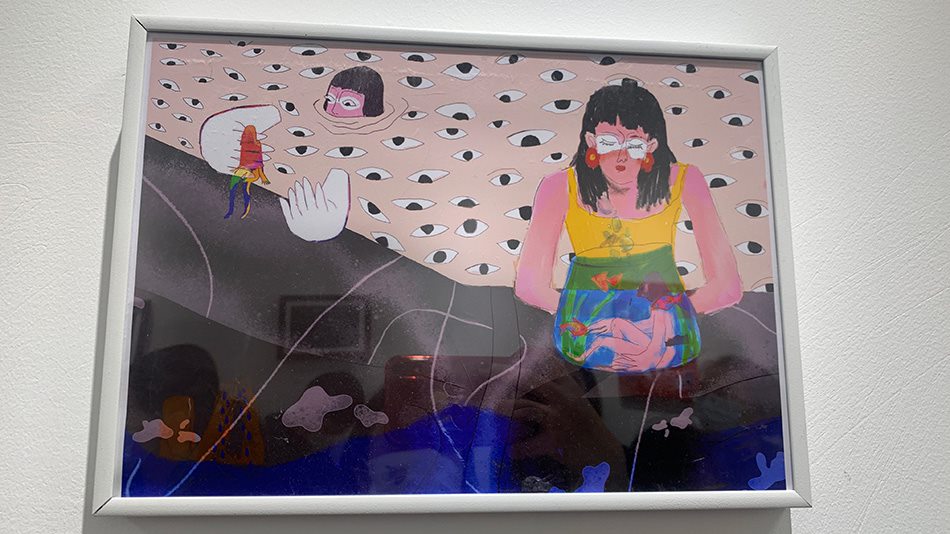
Apart from offline art activities, online platforms on mental health have emerged in Chinese society, which has played a more important role in spreading the voices of people with mental illness to the public. Cracks says it was not at the exhibition that she began to find herself a useful person, but after an unexpected encounter with an organization called Bipolar World a few months ago.
Cracks didn’t feel much better as she took up painting to express her emotions and pain at the height of her symptom in 2019. A few months later, her friend introduced her to Bipolar World, a social platform that focuses on and speaks for bipolar disorder. She found that many people on the platform shared their bipolar experiences through articles and drawings. Her friends encouraged her to submit her paintings to the platform as well.
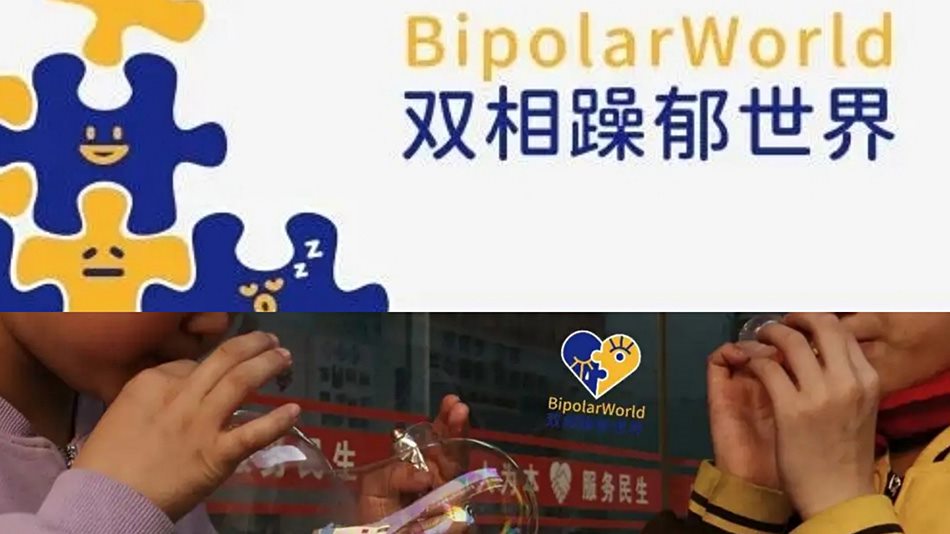
Despite hesitation due to a lack of confidence in her paintings, she finally tried them.

To her surprise, she received many comments on the webpage of her paintings, most of which were complimentary of her excellent artworks, but also included some sympathy and encouragement for her account of her bipolar experience. A strong sense of recognition sprung to her mind. Cracks realized that she was not as bad as she had thought and that her previous perception of herself was wrong.
“I have always loved painting since young and I want to let people know that my world is painful through it. I want my paintings to be seen and this platform allows me to do so,” says Cracks, whose works were well-received on the platform and were recommended to the art exhibition later.
Cracks is one among hundreds of people with bipolar disorder who join Bipolar World and share their experiences on the platform. Like her, many of them have gradually opened their heart to the public and have become more optimistic about their illnesses and life, according to Andrea Wu, the manager of Bipolar World, who has also lived with bipolar disorder for five years.
Bipolar World, founded in 2016, is the first organization in China dedicated to people with bipolar disorder. The online platform aims to give them a channel to tell their experiences through stories, online exhibitions, and documentaries, and to raise public awareness of this mental illness. Andrea says Bipolar World is the only platform in Chinese society specialized in bipolar disorder and has gained influence in the society, with more than ten thousand followers.
Besides, what makes this online platform more significant to society is that it conforms to the way the public obtains information nowadays with the prevalence of social media, according to Andrea. “In formal hospital treatment, doctors provide a one-way and narrow channel of information about mental illness to most patients, with doctors only seeing patients through one-to-one consultations rather than online social platforms such as WeChat and Weibo, but social media is the main way young people access information today,” she explains.
“People with bipolar disorder experiences who share their articles and artworks can be seen by many bipolar or non-bipolar users on our platform. Their voices are not only heard by the public but also strike a chord with people with bipolar disorder and give them great comfort and encouragement,” Andrea adds.
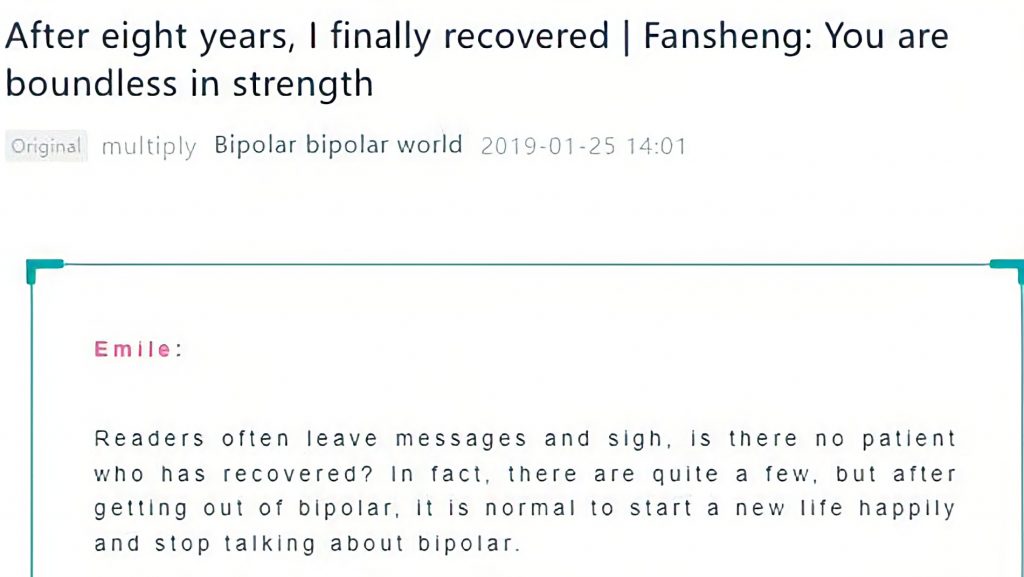
Most articles on the platform have received many comments from readers, which are feedback and feelings about the article, and their personal experiences, which are then encouraged by the author. Andrea and her team also interact with them with encouragement and advice for treatment.
In addition to personal sharing, Bipolar World also provides a social community for people with bipolar disorder to know each other and interact at any time to share their inner thoughts through WeChat Groups, says Liu Yuanqin, the founder of Bipolar World, who holds a strong belief to fill the Internet with the voice of people with bipolar.
“Through the establishment of WeChat groups, members can share their experiences and talk to fellows with bipolar at any time in the group. It allows them to communicate at any time, thus gaining more empathy and feeling they are not alone,” says Liu.
Some members of the platform have also changed their minds about bipolar disorder through these online groups and adopted a more positive attitude toward living with the illness. Chu Jiahui, a girl with bipolar disorder for three years, has gradually overcome the stigma of bipolar disorder and is no longer resistant to treatment after joining the WeChat group through Bipolar World.
“By involving in daily group communication with those having similar experiences, I realized that I was not alone and that my situation was not so miserable,” says Chu, adding that she was inspired by many people who bared their hearts about their bipolar experience and face it so positively, including some suffered from the even tougher situation.

Her mindset towards bipolar disorder began to change. She has since been actively seeing the doctor and has started to consult psychologists, study books on psychology, and write articles about her insights into treating bipolar on the platform. “I learned to embrace bipolar disorder, and helped more people struggling with bipolar,” she says.
Bipolar World has also established a section called “Average People Gallery” , which is an online exhibition for participants with bipolar disorder to present their original artworks including paintings, poems, photographs, and music. Andrea says it meets the needs of those who prefer to express their emotions through artistic creation. “Among people with bipolar disorder involved in Bipolar World, many are artistically gifted,” she says. “They find artistic expressions more visual and heartfelt than written records.”
It was through this channel that Cracks made her paintings accessible to the public, thus opening her mind to the outside world. The two issues of her work in this section that were displayed at the exhibition are a record of her sadness and emotions while surviving the disease, many of which contain deeper meaning and her reflections on life. The drawings, mostly in black and white, are carefully created with pencils and markers, which Cracks says comes from her love of drawing lots of intricate lines that give her a sense of peace and tranquility, and it is also a way for her to heal.
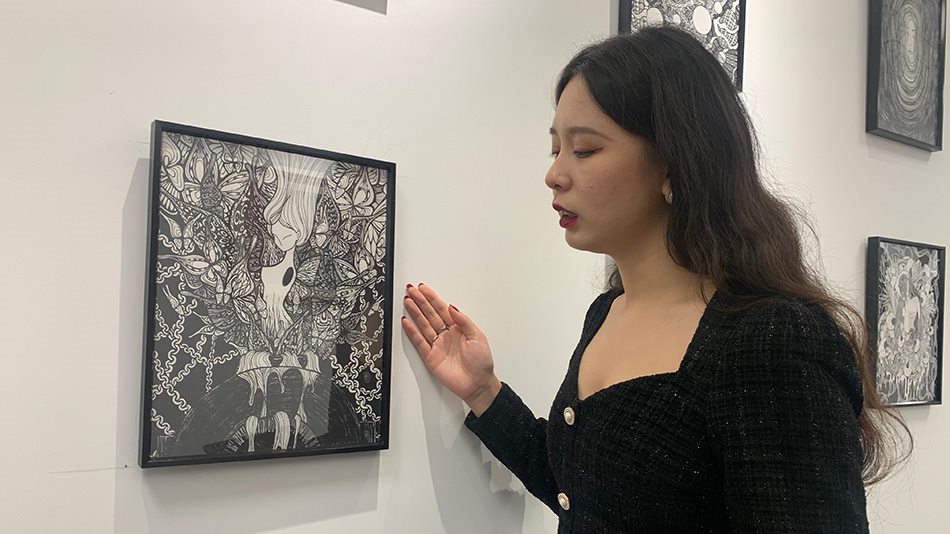
“I always wished I could draw out the chaotic thoughts in my mind through these lines to let outsiders see my struggles, my pain, my tossing and turning. Now I have realized my dream of drawing my inner world in lines,” says Cracks, whose motto for painting is “paint with love, strive to live, and reach the heart with paintings.”
A boy called Jun Ye also contributed an original song named “Bipolar” to the column, which was well-received in the comments section, with many people commenting that the melody of the song was very healing and gave them great comfort. He says that all that he wants to say from his heart is in the music. “The ebb and flow of emotions can be visualized through the changes in pitch. Music opens a door of synesthesia for me, and its melody resonates with listeners who have similar experiences,” says the young musician.
The initial purpose of this online platform is to destigmatize bipolar disorder, increase public awareness, and promote social inclusion for this group. However, the readers of Bipolar World are mostly people who have experienced bipolar disorder or their family and friends, while most average people do not pay much attention to these articles and artworks, according to Andrea.
With this consideration, the Bipolar World’s operations team is planning a major group documentary on bipolar disorder. According to its introduction, the documentary features people with bipolar disorder as the main protagonists, and unites social forces such as medical professionals, social workers, universities, and media workers, with the aim of destigmatizing bipolar disorder and increasing public visibility, response, and awareness of the bipolar disorder.
The producer Andrea believes that compared with articles and artworks, documentaries with much greater input and output will have a long-life cycle and long-lasting and extensive social impact. “Once you post an article, readers will probably read it today and much fewer will browse it tomorrow,” says Andrea. “But a documentary, as a work of art of such a large volume and presented in an audio-visual format, has a much lower threshold, will attract a much larger audience, and can continue to gain sustained public attention on the Internet for a long time.”
Besides, the documentary’s narrative, mainly presented from the perspective of people with bipolar, is also one of its features and uniqueness. The documentary focuses on people with bipolar talking about their experiences and recording their lives in the following shots. Director Liu Xinzi says that this shows that the film puts bipolar patients’ values first and touches them from a “human” perspective.
“There are 8.4 million patients in China, this ‘8.4 million patients’ is a number to the public, but when the public understands their life experience and the inner world through the documentary, they see this person, they can empathize with him, and they can try to understand him,” says Liu, adding that let the value of those with bipolar be seen by the whole society and get social identification is the original intention of the documentary.
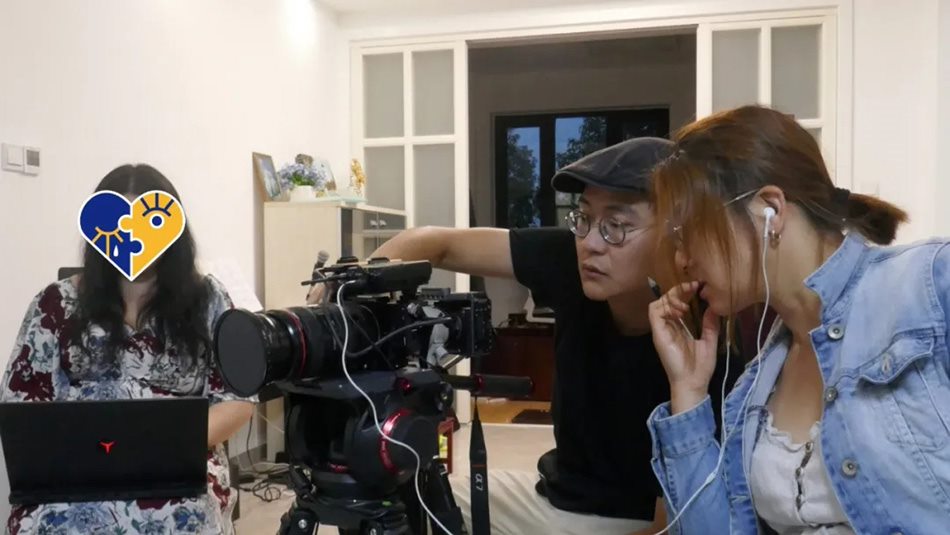
Since filming began in 2019, the documentary team has filmed dozens of bipolar people across the country and shot hundreds of scenes. It is expected to be presented to the public in 2023, according to Andrea. “It’s something that has probably never happened before in China. Nobody has ever done it before, and we are doing it. We want to do it right and let more people hear the voices of we people with bipolar,” she says.
Despite the great efforts put into the documentary, Andrea argues that the impact of Bipolar World on people without bipolar disorder as the vast majority in society is very limited and that it is difficult to fundamentally improve public awareness of this mental illness.
“Although our platform has tens of thousands of followers, most of them are silent and do not actively participate in it, let alone doing social promotion for bipolar disorder,” says Andrea. “Because many people have not had bipolar disorder or are close to someone who has it, it is not relevant to their lives, and they have no interest in it beyond browsing the content and leaving comments.”
In mid-January this year, an article about a bipolar patient named Jin Xiaoyu who became a highly acclaimed literary translator went viral on the Chinese Internet. His story of translating more than 20 foreign works through studying languages on his own brought bipolar disorder into the public eye. While there was not much media coverage of bipolar disorder in China before, this article inspired Andrea and her team that their online platform may help essentially improve social awareness by working with the mainstream media.
Andrea says it’s very difficult to realize, but they have some potential ideas to make their content be seen in the media coverage. To list a few, Andrea says, “We can recommend typical characters like Cracks, whose paintings have gained popularity in society, to be featured in the mainstream media, or get the mainstream media to adopt our suggestions, such as how best to phrase them when reporting to show respect for people with bipolar disorders.”
“Basically, to call them ‘people with bipolar’ rather than ‘bipolar patients’ in the coverage,” she adds.
In June this year, Cracks shared an article on the platform entitled “I can also be a useful person”, describing how she has spent the last three years painting to lift herself from her illness and to help more patients through platform contributions and exhibitions. She is starting to document her feelings on the platform through writing, which she thinks is a good complement to her paintings.
In the article, she writes, “I want more people to see my paintings and articles, and to make more patients feel that they are not alone. I want more people in the world to hear the voices of we bipolar patients.”
Cracked has now moved on with a new life journey. While preparing for the teaching qualification examination for her career, she is still actively engaged in Bipolar World. Apart from contributing to the platform, she often interacts with her friends with bipolar in the WeChat group and encourages them, or in her words, gives them the courage to live.
I always tell them that even though you suffer from bipolar disorder, you can’t let fear hold you back. With the courage to fight the disease, every person with bipolar disorder can be a useful person.
Cracks
